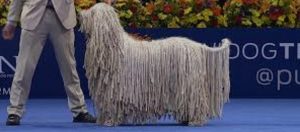I’ll admit it – I’m a classification nerd. I think about definitions and where things fit so I can make mental maps of systems, words and the way things connect with each other. When I first started on this journey entering into my current ‘profession’, I was curious to know more about what the various titles assigned to different people meant and what those people did in practice.
If you are reading this post you’re likely familiar with the usual titles of people in the industry both within Education and for those in Learning and Development:
- Instructional Designer
- Learning (Experience) Designer
- Educational Designer
- Educational Developer
(For reasons that will become more evident below, I’ll refer to the collective as DEERS (DEsigner DevelopERS) from now on)
A DEER by any other name is still a DEER
There weren’t a huge amount of resources online about the differences when I started researching this topic a few years ago. Those I found were often not in alignment. Instructional Design Australia seems to indicate there is a ‘tree’ of a hierarchy of order with the fields, positioning Educational Designer at the top. On Research Gate, the author describes Instructional Design as being a ‘process’ while Learning Design is a collection of resources. Then a whole stack of people weigh in about what they perceive as being the difference between the roles of DEERS. None of these opinions (some linked to research articles) are incorrect, but the diverse interpretation probably means that there isn’t one correct answer either.
After being in the business for a number of years, I came to realise the names applied to the roles are far less important than the context you are operating in. What is far more important is what you are expected to do on a day to day basis. Shocking right?
I’ve worked as all four of the titles above in the course of my career and I would say that in order for a person to do a good job in any of them they should have these range of skills/experience/knowledge:
DEER Qualities
- A qualification – Or experience in Education providing some awareness of pedagogy (i.e., the process of teaching)
- Technical aptitude – You don’t need an IT degree to succeed as a DEER. However, it sure does help to understand how systems work and how different users experience software. This includes students or learners, teachers or facilitators and administrators. You should also have awareness of web design and development (which includes things like UDL, HTML, CSS and UX/UI considerations)
- Project Management – Any DEER project is a series of steps that begins with Analysis and ends with Evaluation. It is generally the job of the DEER to pull the other stakeholders along in this process and keep their eyes on the road ahead. It stands to reason that good project management principles should be something a DEER does well.
- People skills – The last ‘skill’ that a DEER needs to have is a way with people. They need to speak DEER as well as academia, admin, learner and manager.
If you have a good coverage of these four areas, you’re likely to be a pretty darn good DEER. Maybe even Rudolph level good.
Note how I’ve not mentioned the tools that many DEERs would use on a day to day basis. That’s because the tools used should be secondary to the four overarching themes above. If you’ve got technical aptitude you can learn the various similarities and differences of the Learning Management Systems or authoring tools out there.
DEERs next steps
If you are an aspiring DEER, my recommendation would be to look at the four qualities above and see which one you need the most up-skilling in. Then sign up for a few courses that improve your knowledge and experiences. And while you are at, pay attention to what you’re already great at and market the crap out of those qualities too!
As a parting gift I leave you with this great article from ASCILITE and Jenny Bird. It does a nice job of summarising the difficulties of classifying DEER roles in Australian Higher Education. Judging from the way ID and LD definitions are disputed online its message carries some weight outside the sector too.




